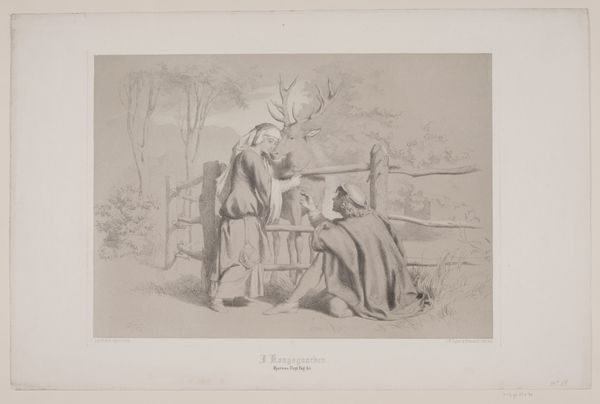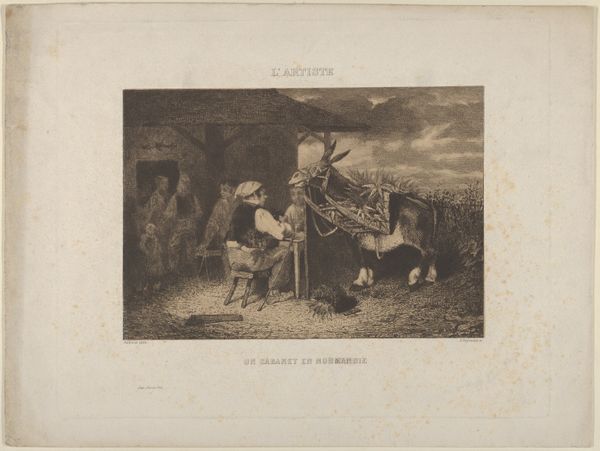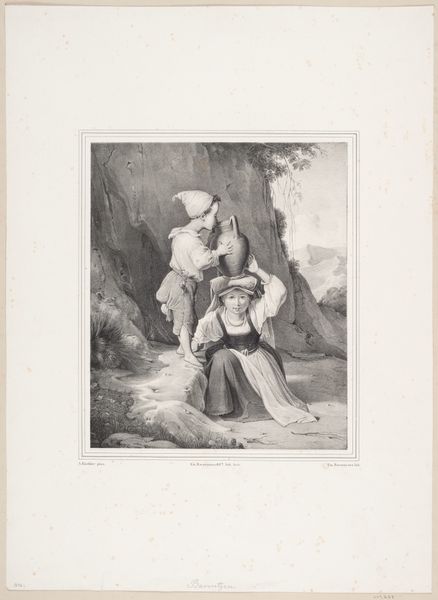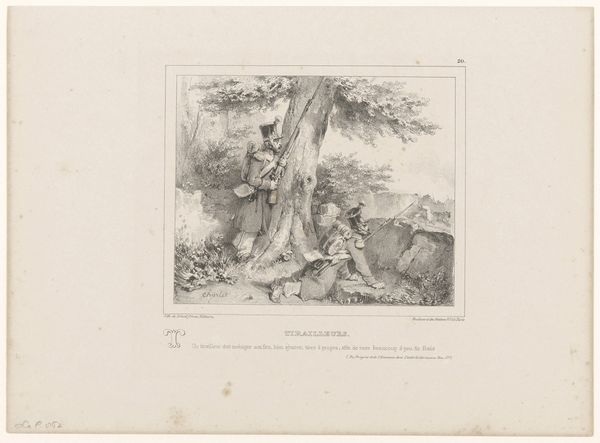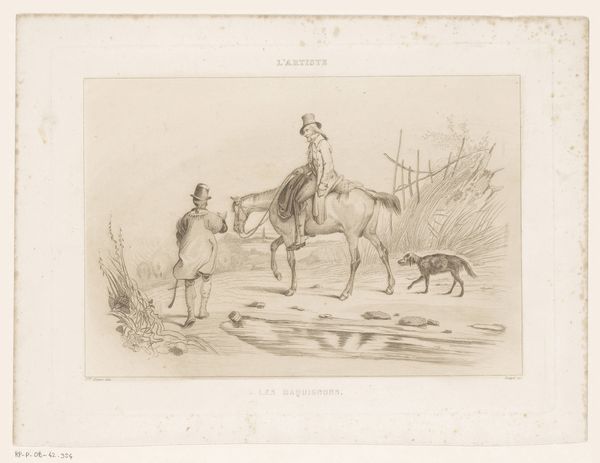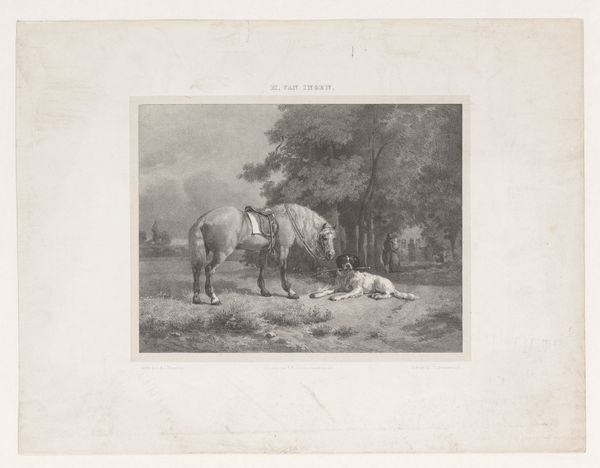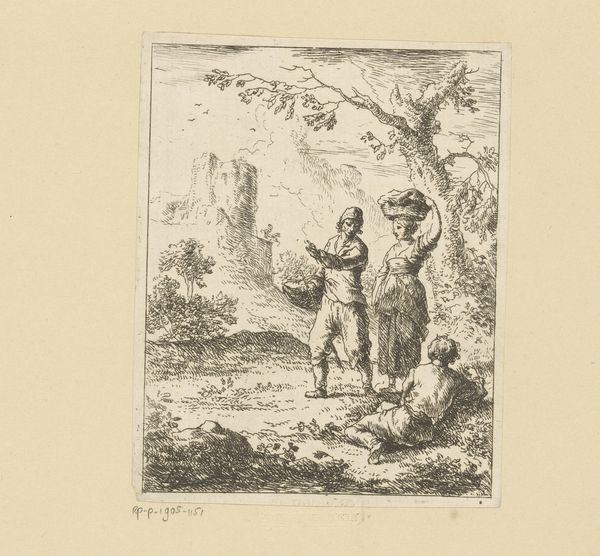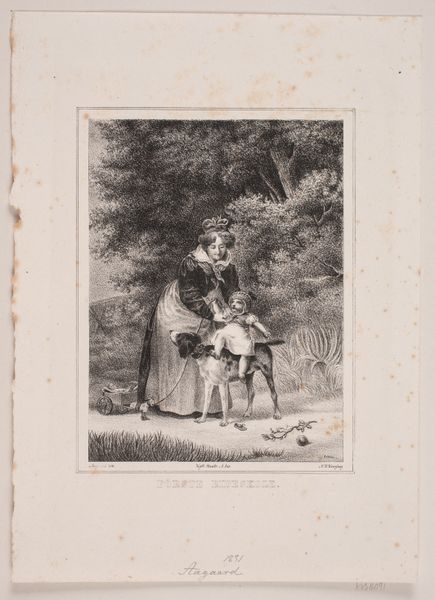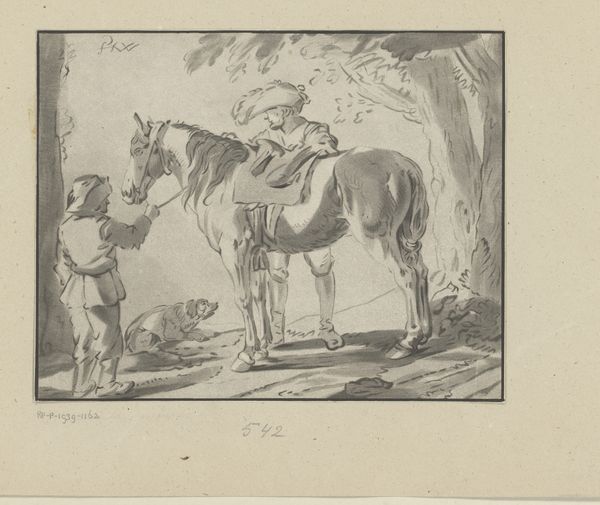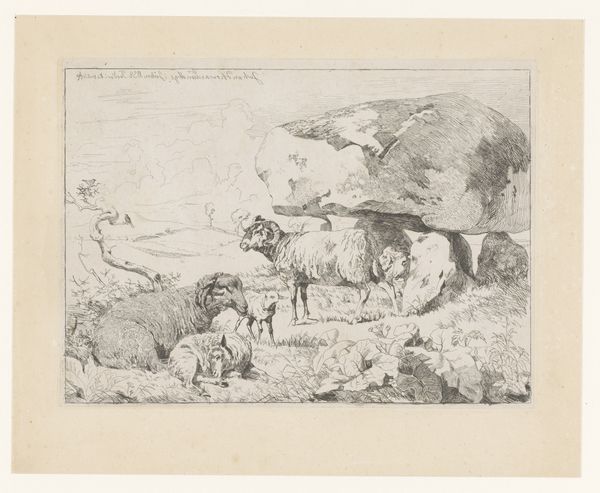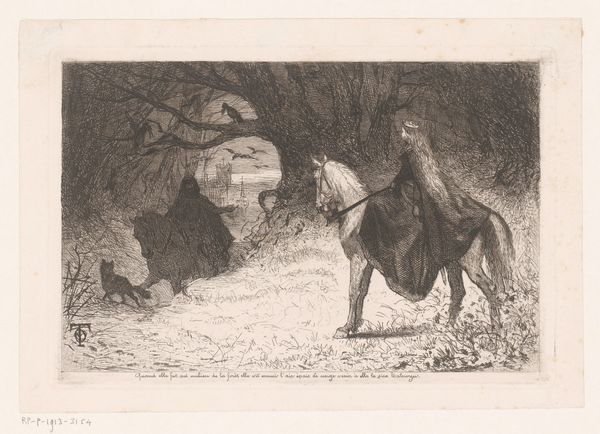
Korset, pag. 299, illustration til Christian Winthers "Hjortens Flugt" 1856
0:00
0:00
Dimensions: 412 mm (height) x 554 mm (width) (bladmaal)
Curator: This drawing, "Korset, pag. 299, illustration til Christian Winthers 'Hjortens Flugt,'" from 1856, by Lorenz Frølich, employs lithograph and pencil work to create a poignant narrative scene. It's a rather subdued composition, wouldn’t you agree? Editor: Absolutely, there is something incredibly delicate about this drawing. I am struck by the tenderness it evokes, and the quiet intimacy between the figures and the stag. Curator: The process is quite remarkable when you consider its origins as an illustration. It's a printed work meant for mass consumption, and its original purpose impacts our perception. It makes you wonder how prints like these affected people's access to and understanding of art at the time. Editor: Indeed. Contextually, seeing this piece created amidst growing nationalism, its focus on figures within nature immediately sparks thoughts on Romantic ideals. I wonder about Frølich’s position as an artist – how did his own cultural and political identities inform his interpretation of Winther’s narrative, particularly regarding themes of national identity or perhaps, resistance? Curator: Frølich's skill lies in manipulating materials – pencil and lithographic ink – to simulate the appearance of an intimate, hand-drawn sketch even within a medium designed for broader distribution. Note the details in the clothing and how that contributes to the historical narrative and gives us clues about labor and societal class. Editor: The depiction of gender and power relations is worth noting, too. The seated woman appears passive while the man, cloaked and standing, seems to assume a protective role. The work echoes larger discussions around femininity, masculinity, and the societal roles assigned to each during that period. Curator: I agree. What this illustration also reveals, perhaps unintentionally, are the material conditions of book production at that time, a largely overlooked aspect in considering artistic value. It challenges the typical focus on the lone artist and instead, highlights the many hands involved. Editor: Considering contemporary relevance, Frølich's work might ignite discussions around issues of ecological concern and species protection. That deer takes centre stage— what implications are we to read into its integration within the human-animal dynamic? Curator: It's interesting how these materials, bound to paper and reproduced mechanically, become vessels carrying complex ideas and opening new avenues for discourse. Editor: Precisely. An artwork that initially appears like a window into a specific historical moment opens out to multiple and pertinent trajectories.
Comments
No comments
Be the first to comment and join the conversation on the ultimate creative platform.
